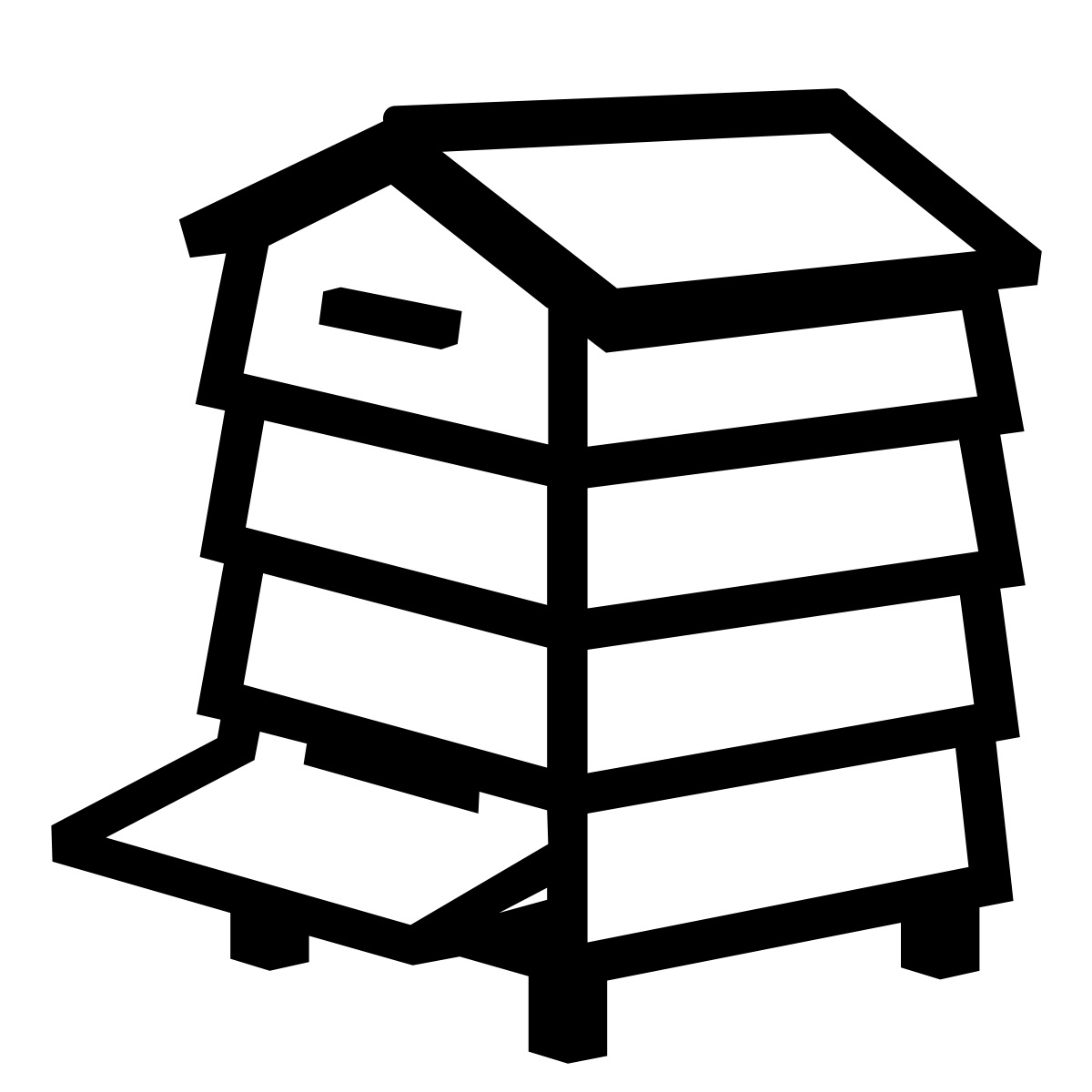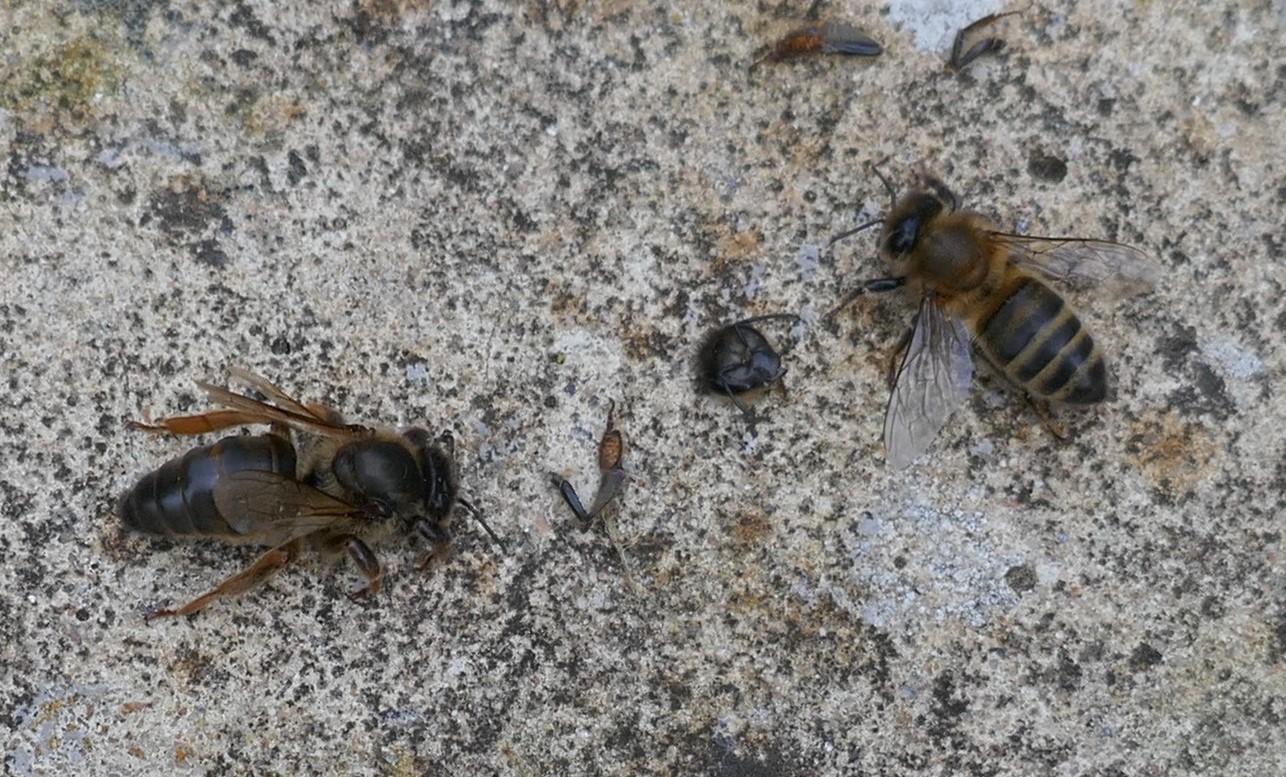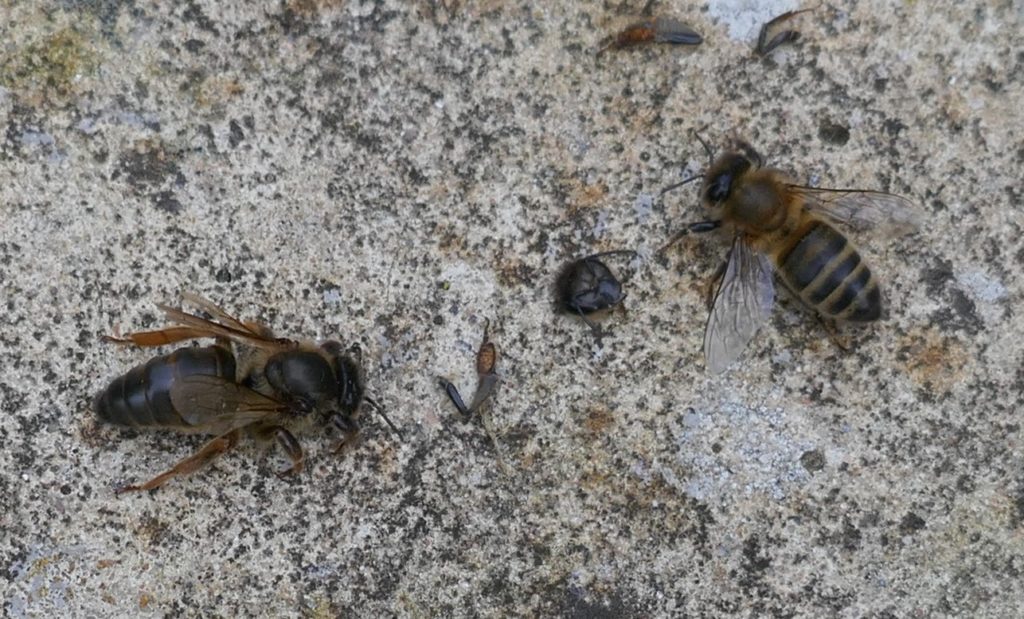
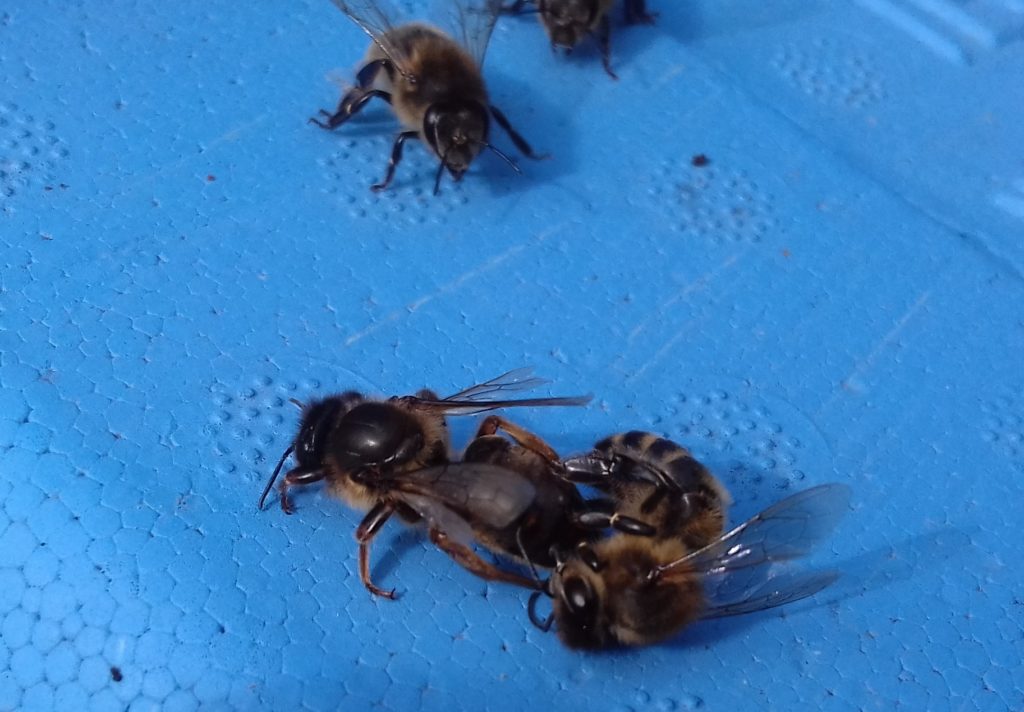
It’s a wet start to October with driving rain and gurgling gutters this morning. My bee work is over for the season and all 9 colonies have plenty stores. On 17th September, I found this dead queen outside one of the hives and can only assume that supersedure is the reason for her demise. I wasn’t going to go poking round at this time of year, so, instead I left the bees to sort things out for themselves. But why supersede? The queen was new this season. I did treat with Mite Away Quick Strips on August 1st and this can cause supersedure. I wanted to get some better photos of her for you so I placed her on the entrance board but had to wrestle her away from the undertaker bee trying to fly off with her.
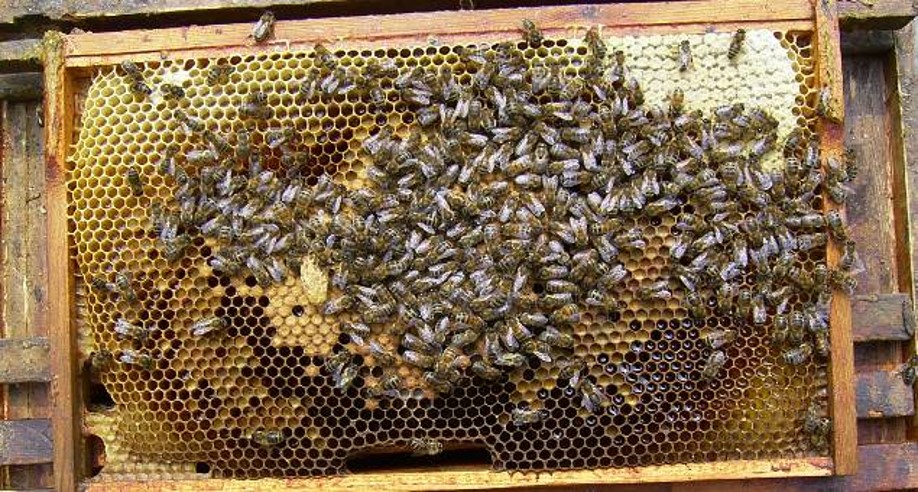
Supersedure.
If I’d still been doing weekly inspections (I stop in July after swarm season is over) I might have noticed a single queen cell like this, or a couple more. These cells are not like swarm cells which are numerous and usually developed from queen cups made along the bottom of the frame, though not always. Sometimes swarm cells are higher up on the frame too.
Supersedure queen cells develop from worker cells and contain larvae or pupae of around the same age, whereas swarm cells contain larvae and pupae at various stages of development. Emergency queen cells made when the queen is suddenly missing are found on the face of the comb, and the larvae and pupae are roughly at the same stage of development. If I’d seen supersedure cells in this colony I would have left them alone. When I started beekeeping I had no idea what these cells were at the end of summer. I thought that the bees were about to swarm and I knocked down the queen cells. That led to a queen- less colony which I had to unite with another queen- right one for winter. But, I learned a good lesson.
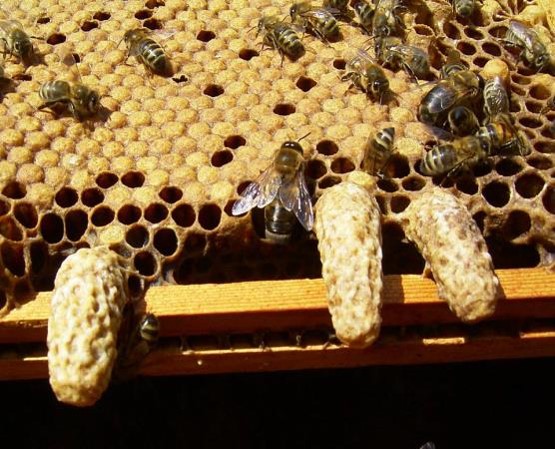
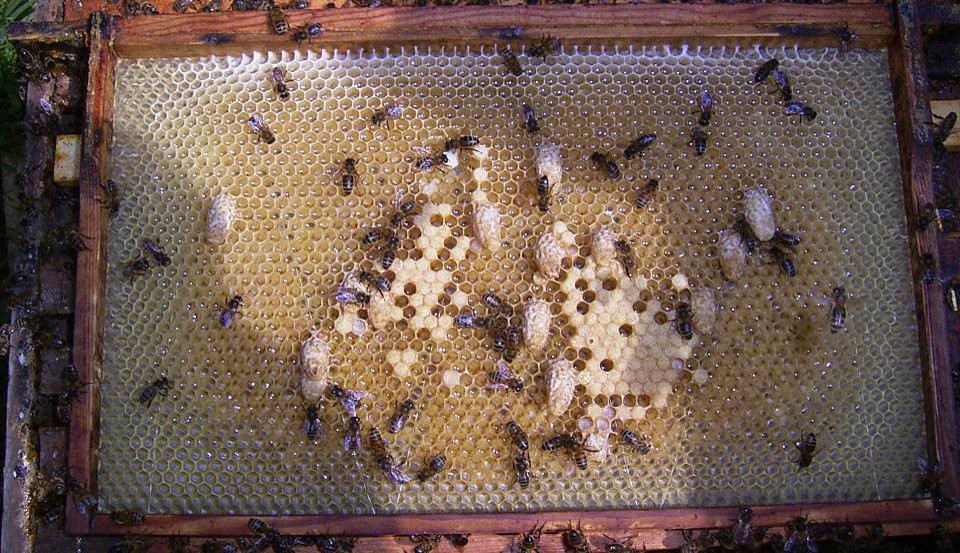
What is Supersedure?
It’s the honey bee colony’s strategy for replacing an old/unsatisfactory queen. Sometimes there is a perfect supersedure in which the old queen is allowed to live on for a while after the new one (her daughter) is laying in the hive. They can lay alongside one another for several months. Imperfect supersedure is when the old queen is bumped off by the bees before the new queen is established.
Why?
Sometimes the queen is just is no good at egg laying, or the circulating queen substance pheromones responsible for colony cohesion are not adequate due to age of queen. The colony is generally not populous and it is not a swarming situation. If the queen was poorly nourished as a larvae she might be superseded. This can happen to queens produced under emergency conditions if an older larva, originally destined to be a worker, were converted to queen through change of diet. These emergency queen are often small and may have other defects. We refer to them as scrub queens and they may lay for a while to keep the colony going until the time is right to produce a better queen.
Queen that are injured in fights among virgins, damaged by beekeeper during marking, wing clipping, or caging might be superseded. Diseases such as nosema can cause infertility and lead to this. Sometimes just handling and marking can cause supersedure. This is why I only mark queens in spring when there are no drones about and the bees will be less likely to supersede if a new queen cannot get mated. Marking queens at the end of summer is risky because there are drones about and the colony often supersedes the marked queen. A new queen may not get well mated at this time of year. I’ve learned this one the hard way too!
How Can You Tell A Supersedure Situation?
Firstly, only a few cells are made. Usually between 1-5, and they are converted worker cells in the centre of the frame. The age of queen larvae is the same and the cells are often darker having been made from recycled wax. These cells are usually seen out- with the normal swarm season in your area. The colony is not usually very strong in numbers and the brood pattern is often poor and scattered because the queen is failing for some reason.
Butterflies and Moths.
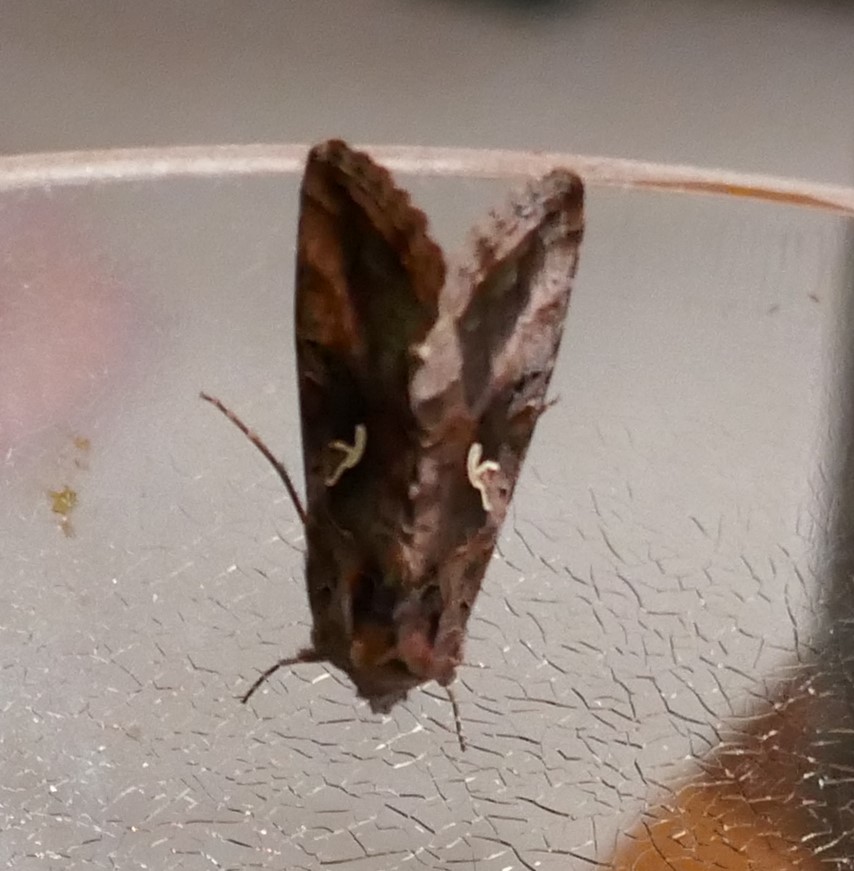
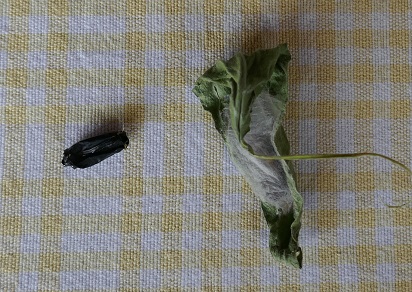
I found these chrysalises on an oil of evening primrose plant leaves in early September. One emerged on 7th to fly off out of the patio door when its wings dried. Not having a moth book for identification, I sent the photo to my “go to” moth expert and friend, Avery, from Grantown. He immediately identified it as a Silver Y and sent a picture of an impressive one that he’d recently found.
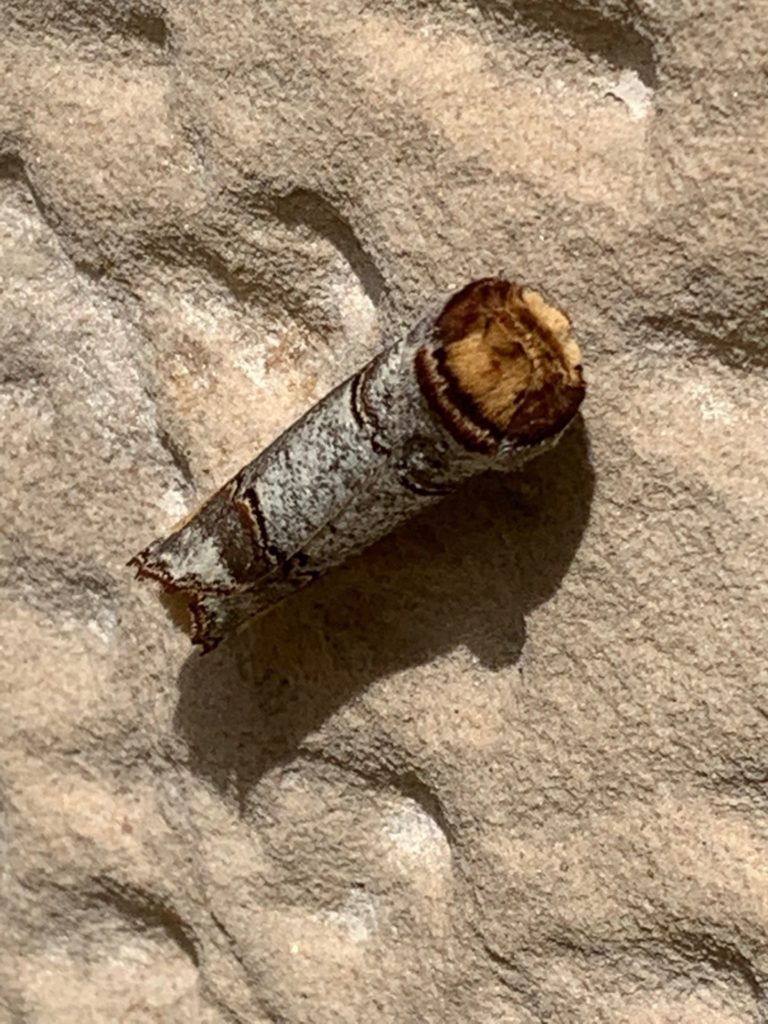
Butterfly Count.
Did anyone manage to count butterflies this year? I just made it in time to count them in our garden on the last day, but it was not a spectacular number. I got 8 small tortoiseshell, 6 peacocks, one gatekeeper and 2 small white butterflies. Despite a 25% rise in participants, there was a 34% reduction in butterfly numbers this year compared with last year. You can see the results below:https://butterfly-conservation.org/news-and-blog/big-butterfly-count-2020-the-results?utm_source=Dotmailer&utm_medium=e
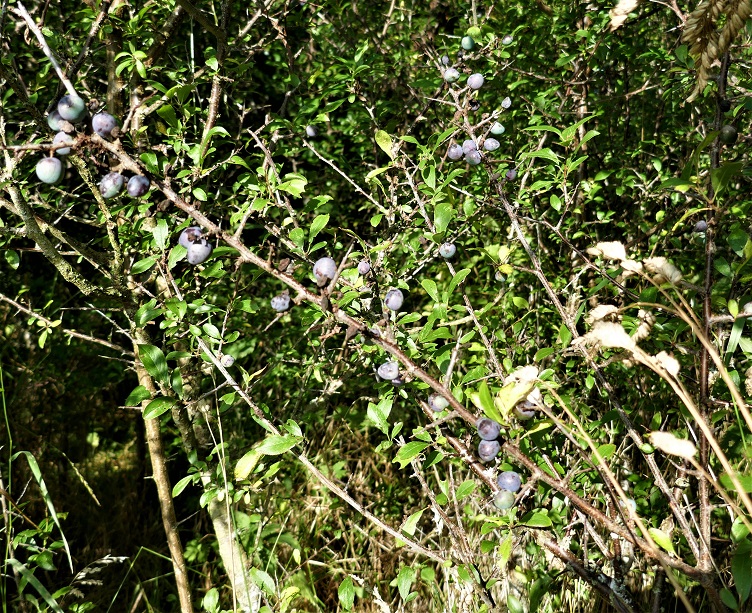
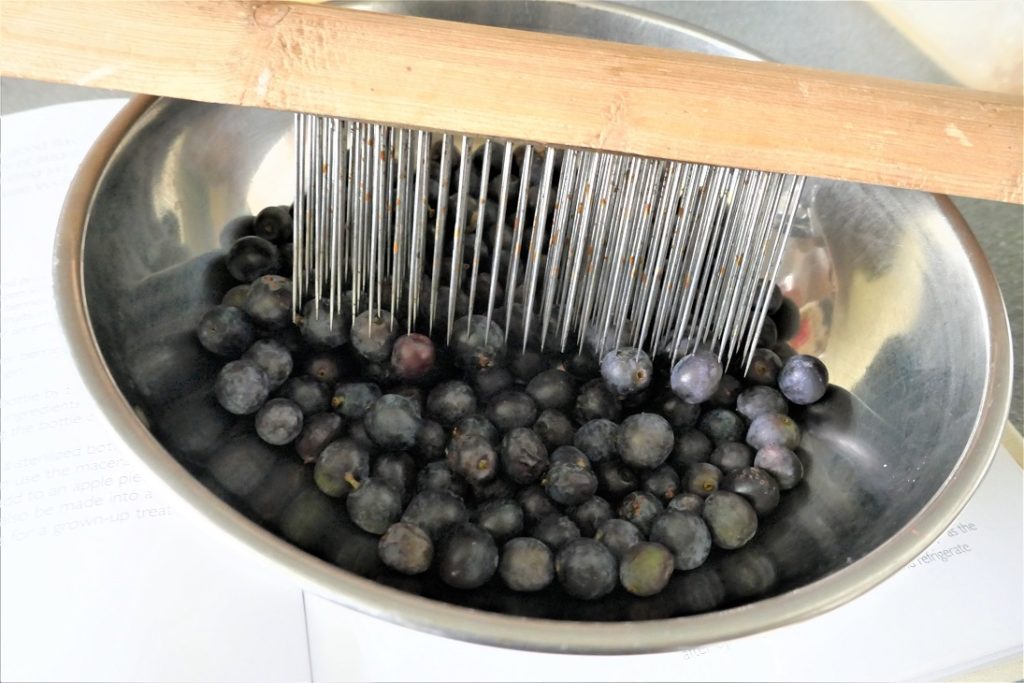
Sloe Gin.
I made double quantities since I’d picked 1lb sloe berries from the blackthorn bush (Prunus spinosa). By the way, I picked up 2 unwanted ticks at the same time, but they are not in the gin! The recipe calls for 225g (8oz) sloes, 85g (3oz) caster sugar, 4 juniper berries slightly crushed (I didn’t have any of them), a few drops of natural almond extract and 350ml (12 fluid oz) gin. I used Gordons dry gin.
You have to wash and dry the berries and prick each one with a darning needle. I was in a hurry and so I used the heather loosener which is none the worse for wear. If you’ve frozen the berries you don’t need to prick them. You put the fruit in a sterilized bottle and add the sugar, juniper berries, and almond extract then top up with the gin. Shake gently to mix the ingredients and leave in a cool dark place for 3 months (if you can resist the temptation to try it). After that you strain the liqueur into a sterilized bottle, cork it and that’s you done. You can eat the gin-soaked sloes with ice cream but watch out for the stones. Getting a dental appointment is tricky in these times.
